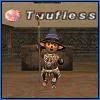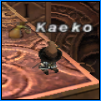I have heard several people so far level a very legitimate criticism of yesterdays post. They said that its too much and to them the information is too in-depth and they will just do what they are going to do, and also that they weren't going to read this. In response to this I have three thoughts, first I do hope that there are people out there that do enjoy this level of detail and they will be able to draw insight from a more layman's description of the damage formula. Second, for those that feel this is too much, I do plan on adding some explanations at the end on how people can use the information in practical situations. Finally, I am not just doing this for you, I am also doing it for my own edification. It is the nature of blogging, but in essence writing all of this out is making it much more comprehensible to me. So even if I am the only one that learns from these explanations then I have achieved something.
Now, back to the show.
Yesterday, we left off with only the first half of the damage equation completed. Lets take a moment to go over what the equation looks like at this point:
Damage = Base Damage x pDIFbecomes
Damage = (D + (dSTR + N)/2) x pDIFNow, remember that these numbers are limited on the high and low end not at just at the dSTR level, but also at the fSTR level, I didn't add that to the equation because writing that into the equations would require like Sigmas and functions and other crap that I don't know how to notate. LOL Now it is time for pDIF.
Lets start with what pDIF means and what it represents. pDIF has several difference components but essentially it boils do to a calculation that takes the player's Attack and subtracts it from the monster's Defense, then a level correction is applied, finally SE inserts a random factor that causes the variance in damage that you see in the game. Knowing that, lets take a look at the actual pDIF formula and I will describe the different portions of the equation. Actually, lets not, because the pDIF isn't really so much an equation, but an algorithm that has a modification place upon it. Since we don't really care about (or actually, we can't really do anything about) the algorithm that SE uses in this part, what we want to look at is the modification that is applied to the algorithm. That modification is:
cRatio = Ratio - 0.050 x level differenceRatio is simply your Attack divided by the Defense of the monster you are trying to kill. This is different than the simple subtraction that happens in the fSTR formula for the comparison between player STR and mob VIT.
Ratio = ATT/DEFIn this case, for simplicity I have adapted ATT to mean the player's Attack and DEF for the monster's Defense. Level difference is again pretty simple, it is just the monster's level minus the player's level. So the complete equation would look like this:
cRatio = ATT/DEF - 0.050 x (mobLVL - playerLVL)Now let us recall from yesterday our sexy Samurai scenario, here is a picture in case you had forgotten!
 Our sexy Samurai has an Attack value of 422, and from the previous mentioned research that others have done we know that the Defense value for a level 81 Greater Colibri is 322. With this information we can determine cRatio (I believe this stands for corrected Ratio because it is a ratio that is "corrected" by the level difference).
Our sexy Samurai has an Attack value of 422, and from the previous mentioned research that others have done we know that the Defense value for a level 81 Greater Colibri is 322. With this information we can determine cRatio (I believe this stands for corrected Ratio because it is a ratio that is "corrected" by the level difference). cRatio = 422/322 - 0.050 x (81-75) = 1.310 - 0.3 = 1.01Well, it's much later than I had hoped so I am going to leave off here for today. The next part involves ranges and randomness and I need to leave more time for it anyway. Hopefully, I can finish this up tomorrow!





 #1 ~ Monk
#1 ~ Monk #2 ~ Samurai
#2 ~ Samurai #3 ~ Ninja
#3 ~ Ninja #4 ~ Dragoon
#4 ~ Dragoon Chaotic Pellucidity
Chaotic Pellucidity Teabags and KY Jelly
Teabags and KY Jelly The Bloggaru!
The Bloggaru!

1 comment:
I still read it. ^.^ Don't get me wrong, learning is still a process, but there is a point at which, I would rather just not know. I wouldn't CHOSE to take Maths as a subject, the same way I will use the knowledge of others to get myself into a better position to perform well and excel as my DRG. I think that this sort of dialogue is excellent for personal understanding, but you still have to communicate an idea. At that point, how well do you succeed? I could explain thought processes in my head to anyone, and they wouldn't follow it, the art of writing is being able to translate your personal ruminations into an intellectual conversation with the reader. In that respect, despite the dense nature of the subject material, it is an interesting read.
Post a Comment